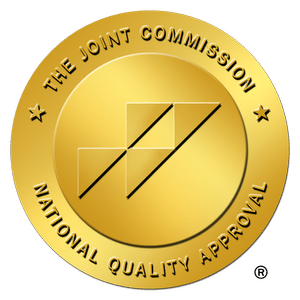First Look
Complex trauma and Post-Traumatic Stress Disorder (PTSD) are profound and challenging mental health issues that arise from deeply distressing or disturbing experiences.
Understanding these conditions is vital, not only for those directly affected but also for caregivers, mental health professionals, and the broader community.
This comprehension fosters empathy, aids in effective treatment, and dismantles stigmas associated with mental health.
In this blog, I’ll explore definitions, causes, and the various complex traumas and PTSD manifest in individuals.
Then I’ll explain coping strategies and treatments, offering insights into how individuals can manage and potentially overcome the effects of these profound experiences. Case studies and personal stories provide context and hope.

What Is Complex Trauma?
Complex trauma refers to exposure to multiple traumatic events, often of an invasive and interpersonal nature, resulting in a wide range of long-term effects.
Unlike single-incident trauma, which is tied to a specific event, complex trauma usually occurs repeatedly, making it deeply ingrained and pervasive.
Common sources include prolonged abuse, exposure to violence, and living in war zones.
Children who experience neglect or abuse are particularly susceptible to complex trauma.
The impacts of complex trauma are multifaceted.
Psychologically, it can lead to difficulties in regulating emotions, distorted perceptions of perpetrators (such as loyalty to an abusive caregiver), and an impaired sense of self.
Physically, chronic stress may result in a host of health issues, including cardiovascular problems and autoimmune disorders.
Socially, it often leads to difficulties in forming healthy relationships and maintaining personal boundaries.

What Is PTSD?
Post-Traumatic Stress Disorder, a condition more widely recognized, typically follows a single traumatic event.
Symptoms of PTSD include recurring, involuntary, and intrusive distressing memories of the traumatic event, flashbacks, avoidance of reminders of the trauma, alterations in cognition and mood, and marked changes in arousal and reactivity.
These symptoms last for more than a month and cause significant distress or impairment in social, occupational, or other important areas of functioning.
Importance of the Topic
The significance of understanding complex trauma and PTSD cannot be overstated.
Globally, millions of individuals are affected by these conditions, which often go unrecognized and untreated.
This lack of recognition can lead to a cascade of problems, including substance abuse, depression, anxiety, and a host of physical health issues.
Furthermore, the societal impact is profound, as untreated trauma can lead to cycles of violence, poverty, and chronic health problems that affect communities and economies.

Why a Broader Understanding Matters
A broader understanding of complex trauma and PTSD is important for several reasons.
Firstly, it promotes empathy and support for those affected.
Understanding the root causes of behaviors often seen in traumatized individuals—such as aggression, withdrawal, or substance abuse—fosters a more compassionate and effective response.
Secondly, awareness can lead to better policy and healthcare interventions.
This includes trauma-informed care approaches in mental health services, education, and social services, which recognize the widespread impact of trauma and seek to avoid re-traumatization.
Finally, understanding these conditions can help in breaking the cycle of trauma.
By supporting affected individuals and addressing the root causes of trauma in communities, we can prevent the transmission of trauma from one generation to the next.

Understanding Trauma
Trauma is a term frequently used in both clinical and everyday language.
It refers to the emotional response to a deeply distressing or disturbing event that overwhelms an individual’s ability to cope, causes feelings of helplessness, and diminishes their sense of self, and their ability to feel the full range of emotions and experiences.
Understanding the nuances of different types of trauma is essential for effective treatment and recovery.
Definition and Types of Trauma
Trauma can vary greatly in its intensity, duration, and impact.
It is broadly classified into three types: acute trauma, chronic trauma, and complex trauma. Each type has unique characteristics and effects on an individual’s mental health.
Acute Trauma
Acute trauma results from a single, distressing event. This could be a natural disaster, a car accident, a violent assault, or any other incident that poses a serious threat to a person’s physical or psychological well-being.
The key characteristic of acute trauma is its singular occurrence.
The symptoms of acute trauma may include intense fear, shock, denial, unpredictable emotions, flashbacks, strained relationships, and physical symptoms like headaches or nausea.
While these reactions are normal in the short term, they can become problematic if they persist for a long period.
Typically, with the right support and coping strategies, individuals can recover from acute trauma.
However, if the symptoms are not addressed, they may lead to more severe psychological issues, including Post-Traumatic Stress Disorder (PTSD).
Chronic Trauma
Chronic trauma results from repeated and prolonged exposure to highly stressful events.
Examples include ongoing domestic violence, bullying, long-term illness, chronic neglect, or living in a war-torn region.
Unlike acute trauma, chronic trauma involves repeated exposure, which can lead to a more complex set of symptoms.
Chronic trauma often has a cumulative effect, with the stress building up over time.
This can lead to severe long-term issues such as complex PTSD, significant mood swings, feelings of hopelessness or despair, and deep-seated issues with trust and relationships.
People experiencing chronic trauma may also show symptoms like detachment from reality or dissociation, where they feel disconnected from their body or thoughts.
Complex Trauma
Complex trauma is a term used to describe exposure to multiple traumatic events, often of an invasive and interpersonal nature.
It is frequently experienced by individuals who endure long-term abuse, profound neglect, or abandonment, especially during developmental stages in childhood.
The impact of complex trauma is far-reaching and multidimensional, affecting:
- Emotional regulation
- Consciousness
- Self-perception
- Perceptions of perpetrators
- Relations with others
- One’s system of meaning
Individuals with complex trauma may experience severe psychological challenges including difficulties in controlling emotions, profound feelings of shame or guilt, and challenges with forming healthy relationships.
They are also at a higher risk of developing mental health disorders such as PTSD, depression, and anxiety disorders.
If you are grappling with the challenges of this persistent condition, please reach out to us. Our team possesses extensive expertise in complex trauma treatment, a crucial aspect of mental health care.
We are committed to guiding you through your healing journey, helping you reclaim control of your life.
Don’t hesitate to contact us for support in overcoming this significant hurdle and starting your path towards recovery.
Understanding the Different Facets of Trauma
Understanding these different types of trauma is vital in recognizing the varied experiences of those who have endured traumatic events.
Mental health professionals, caregivers, and society as a whole must acknowledge these differences to provide appropriate support, empathy, and treatment.
Recognizing the specific type of trauma someone has experienced allows for a more targeted approach in therapy and support, which is a critical step in the journey toward healing and recovery.
Causes of Trauma
Trauma arises from a multitude of sources, deeply affecting individuals’ mental and emotional well-being.
It’s a complex interplay of personal experiences and environmental factors, each with its distinct impact.
Understanding these causes is crucial for providing effective support and therapy to those who have experienced trauma.
Personal Experiences
Personal experiences that lead to trauma are as diverse as they are profound. They often involve situations where individuals feel intensely threatened, helpless, or horrified. Key examples include:
Physical, Emotional, and Sexual Abuse: Abuse in any form, whether it’s physical, emotional, or sexual, is a significant cause of trauma. This is especially true when the abuser is someone the victim trusts or depends on, such as a family member, partner, or caregiver.
Serious Accidents: Traumatic injuries from car accidents, falls, or other serious mishaps can lead to long-lasting psychological trauma, often manifesting as PTSD.
Natural Disasters: Earthquakes, hurricanes, floods, and other natural disasters can be traumatic, particularly because of the suddenness and uncontrollability of these events.
War and Conflict: Exposure to war, conflict, or terrorism, whether as a combatant or a civilian, often leads to profound and lasting trauma.
Sudden Loss of a Loved One: The unexpected death of a close friend or family member can be deeply traumatic, especially if the bereaved person witnesses the death or is involved in the aftermath.
Severe Illness or Medical Intervention: Trauma can also result from experiencing a life-threatening illness or undergoing invasive medical procedures, especially in the case of children or those with previous traumatic experiences.
These experiences can shatter individuals’ sense of security, leaving them feeling vulnerable and helpless in a world they perceive as dangerous.
Environmental Factors
The environment in which one lives can significantly contribute to the development of trauma. These factors often intersect with personal experiences, exacerbating their impact. They include:
Socioeconomic Factors: Poverty, living in high-crime areas, or enduring systemic discrimination can contribute to ongoing stress and trauma. The constant pressure of living in unsafe or unstable conditions can take a significant toll on mental health.
Family Dynamics: Growing up in a dysfunctional family environment, such as one with substance abuse, mental illness, or where emotional support is lacking, can lead to developmental trauma.
Community Violence: Living in a community where violence is prevalent, such as gang violence or frequent shootings, can lead to chronic trauma, as individuals are repeatedly exposed to threatening situations.
Political Instability or Persecution: Living in a country or region marked by political unrest, war, or persecution can lead to trauma. This is particularly relevant for refugees and asylum seekers who flee such conditions.
Cultural and Historical Trauma: This refers to the cumulative emotional and psychological wounding over one’s lifespan and across generations, emanating from massive group trauma.
Examples include the historical trauma suffered by Indigenous peoples or those who have experienced slavery or genocide.
Environmental factors often make it difficult for individuals to find safe spaces to recover, perpetuating a cycle of trauma. For instance, children growing up in war-torn countries may continuously face traumatic events without the opportunity for healing or stability.
The causes of trauma are multifaceted, intertwining personal experiences with environmental factors.
Recognizing these causes is the first step in addressing the impact of trauma.
It helps in developing targeted interventions and supports that acknowledge the complex nature of traumatic experiences.
Understanding the root causes also aids in creating societal and policy changes to prevent these traumatic experiences, particularly those stemming from environmental factors.
As we grow in our understanding of the causes of trauma, it paves the way for more effective treatments, prevention strategies, and a more empathetic society that can support those who have been affected.

Trauma and Its Impact on the Brain
Trauma, especially when it is severe or repeated, can have profound effects on the brain, altering its structure and function.
These changes can lead to a range of emotional and behavioral effects, influencing how an individual perceives, reacts to, and copes with stress and everyday life.
Understanding these neurological and psychological impacts is crucial for comprehending the depth and breadth of trauma’s effects.
Neurological Changes
The Amygdala and Emotional Responses
The amygdala, a key structure in the brain’s limbic system, plays a critical role in processing emotions, particularly fear and aggression.
In the aftermath of trauma, the amygdala can become hyperactive, leading to an exaggerated stress response.
This heightened state can make an individual more reactive to perceived threats, resulting in anxiety, hypervigilance, and difficulty in regulating emotions.
The Hippocampus and Memory
Trauma can also affect the hippocampus, which is crucial for forming and retrieving memories.
Studies have shown that prolonged exposure to stress hormones, like cortisol, can damage the hippocampus.
This damage can lead to problems with memory consolidation and retrieval, manifesting as memory loss or flashbacks, a hallmark symptom of PTSD.
The Prefrontal Cortex and Decision Making
The prefrontal cortex, responsible for higher-order functions like planning, decision-making, and moderating social behavior, can also be affected by trauma.
Trauma can impair the functioning of the prefrontal cortex, leading to difficulties in making decisions, solving problems, and controlling impulses.
This impairment can also affect an individual’s ability to regulate emotions and respond appropriately to stressful situations.
Neuroendocrine Changes
Trauma can lead to long-term changes in the body’s stress response system, particularly the hypothalamic-pituitary-adrenal (HPA) axis, which controls the release of cortisol.
Dysregulation of the HPA axis can result in either an exaggerated or blunted stress response, contributing to various physical and mental health issues.
Emotional and Behavioral Effects
Emotional Dysregulation
As a result of the neurological changes, individuals who have experienced trauma often struggle with emotional regulation.
They may experience intense, unpredictable emotions and may have difficulty calming down when upset.
This dysregulation can lead to mood swings, intense anxiety, depression, and feelings of numbness or detachment.
Behavioral Changes
Trauma can lead to significant behavioral changes. Some individuals may become withdrawn and avoidant, steering clear of anything that might remind them of the traumatic event.
Others might exhibit aggression, irritability, or engage in risky behaviors.
These changes are often coping mechanisms to manage overwhelming emotions or to regain a sense of control.
Impact on Relationships
The emotional and behavioral changes resulting from trauma can strain relationships.
Traumatized individuals might find it hard to trust others, experience difficulties in intimacy, or have heightened conflict in relationships.
This can lead to a sense of isolation and loneliness, exacerbating the psychological impact of the trauma.
Cognitive Effects
Trauma can affect cognitive functions like attention, concentration, and memory.
Individuals might experience difficulty concentrating or making decisions, and they may have trouble remembering details of the trauma or, conversely, find themselves unable to stop thinking about it.
Coping Mechanisms
People with trauma often develop coping mechanisms, which can be either adaptive or maladaptive.
Some might turn to substance abuse as a way to numb their feelings or escape from memories.
Others might develop compulsive behaviors, eating disorders, or self-harm tendencies as a way to exert control over their lives or to express their pain.
The impact of trauma on the brain is multifaceted, affecting both neurological functioning and emotional and behavioral responses.
These changes can have far-reaching consequences on an individual’s life, influencing their mental health, relationships, and overall well-being.
Understanding these effects is crucial for developing effective treatment and support strategies.
It also underscores the importance of early intervention and comprehensive care for those who have experienced traumatic events, to mitigate these long-term impacts and aid in recovery.

PTSD: A Deeper Dive
Post-Traumatic Stress Disorder (PTSD) is a complex and severe mental health condition triggered by experiencing or witnessing a traumatic event.
It’s a disorder that can have profound implications on an individual’s life, affecting their emotional state, physical health, memory, and overall functioning.
In this section, I delve deeper into the nature of PTSD, its symptoms, how it develops, and how it differs from complex PTSD.
Definition and Symptoms of PTSD
PTSD is characterized by a range of symptoms that can manifest after a person has been exposed to a traumatic event.
These symptoms are typically grouped into four categories:
- Intrusive thoughts
- Avoidance behaviors
- Negative alterations in cognition and mood
- Alterations in arousal and reactivity.
Emotional and Psychological Symptoms
Intrusive Thoughts: This includes recurrent, unwanted distressing memories of the traumatic event, flashbacks (reliving the trauma as if it were happening again), and nightmares.
Avoidance: Individuals with PTSD often avoid thoughts, feelings, or conversations related to the traumatic event. They may also steer clear of places, activities, or people that remind them of the trauma.
Negative Alterations in Cognition and Mood: This can manifest as negative beliefs about oneself or others, distorted feelings like guilt or shame, and an inability to experience positive emotions.
Alterations in Arousal and Reactivity: Symptoms include being easily startled, feeling tense or “on edge,” having difficulty sleeping, and displaying irritable or aggressive behavior.
Physical Symptoms
In addition to emotional and psychological symptoms, PTSD can also have physical manifestations. These include:
- Gastrointestinal distress
- Chronic pain
- Cardiovascular problems
- Rapid breathing or hyperventilation
- Muscle tension
- Fatigue
The Development of PTSD
The development of PTSD is influenced by a complex interplay of risk factors and the individual’s experience of trauma and memory.
Risk Factors
Certain factors increase the likelihood of developing PTSD after a traumatic event. These include:
Previous Traumatic Experiences: Individuals with a history of trauma are at a higher risk.
Existing Mental Health Conditions: Pre-existing anxiety or depression can heighten the risk.
Family History: A family history of mental health disorders can increase susceptibility.
Lack of Support: Insufficient social or emotional support post-trauma can contribute to the development of PTSD.
The Nature of the Trauma: Traumas that are prolonged, severe, or involve harm by another person (such as in cases of assault or abuse, or for veterans, war) are more likely to lead to PTSD.
Trauma and Memory
The way trauma impacts memory plays a crucial role in PTSD.
Traumatic memories are often fragmented, and disorganized, and may be relived repeatedly through flashbacks and nightmares.
The brain’s response to trauma can alter the way memories are formed, stored, and retrieved, leading to the intrusive and persistent nature of traumatic memories in PTSD.
Differences Between PTSD and Complex PTSD
While PTSD and Complex PTSD (C-PTSD) share some common symptoms, there are distinct differences mainly due to the nature of the trauma experienced.
PTSD
Typically Results from a Single Traumatic Event: PTSD often develops after a one-time traumatic event like an accident, natural disaster, or a violent attack.
Symptoms: PTSD symptoms are primarily centered around:
- Re-experiencing the traumatic event
- Avoidance
- Negative changes in thoughts and mood
- Heightened arousal
Complex PTSD
Origin: C-PTSD results from prolonged or repeated trauma, often occurring over years. This is common in cases of domestic abuse, childhood neglect, or prolonged conflict.
Symptoms: In addition to the symptoms of PTSD, C-PTSD includes:
- Problems with emotional regulation
- A persistent sense of threat
- Feelings of emptiness or hopelessness
- Difficulties in sustaining relationships.
Individuals with C-PTSD may also struggle with a distorted self-perception and a profound sense of shame or guilt.
Summary
PTSD is more than just a response to a frightening or stressful event; it is a complex disorder that can fundamentally change how a person thinks, feels, and behaves.
Its symptoms can be debilitating, impacting every aspect of life.
Understanding the nuances of PTSD, its development, and how it differs from complex trauma disorders is crucial for effective treatment and support.
Recognizing the signs of PTSD and seeking professional help is essential for recovery.
Treatment often involves psychotherapy, such as cognitive-behavioral therapy or EMDR, and may include medication to manage symptoms.
Support from family, friends, and support groups also plays a vital role in healing.
As we continue to learn more about PTSD and complex trauma, it becomes increasingly clear that these are not conditions that people can simply “get over.”
They require compassion, understanding, and comprehensive care. By deepening our understanding of these disorders, we can better support

Coping Strategies and Treatments
Managing trauma and PTSD effectively often requires a multi-faceted approach, incorporating self-help strategies, professional treatments, and holistic therapies.
Each of these components contributes uniquely to the healing journey.
Self-Help Strategies
Mindfulness and Relaxation Techniques: These techniques are pivotal in managing the symptoms of trauma and PTSD.
Mindfulness practices, such as mindful breathing and meditation, encourage individuals to stay present and grounded, reducing the impact of intrusive thoughts and flashbacks.
Relaxation techniques like progressive muscle relaxation and guided imagery can help lower stress and anxiety levels, thus aiding in better emotional regulation.
Building a Support Network: Establishing a strong, supportive network is vital. This network can include friends, family, or support groups specifically for trauma survivors.
Being surrounded by people who understand and support one’s experience can provide a sense of comfort and stability.
Support networks can also offer practical advice, emotional comfort, and a sense of belonging, all of which are crucial for recovery.
Professional Treatments
Psychotherapy Approaches include:
Cognitive-Behavioral Therapy (CBT): CBT is highly effective in treating PTSD.
It involves identifying and challenging negative thought patterns and behaviors related to the trauma, and replacing them with more balanced and constructive ones.
This therapy also involves exposure techniques to help individuals gradually face their trauma-related memories and feelings.
EMDR (Eye Movement Desensitization and Reprocessing): EMDR is a unique form of therapy that involves the patient recalling traumatic events while the therapist directs their eye movements.
This process is thought to lessen the emotional impact of memories and is particularly effective for processing deeply entrenched traumatic experiences.
Medications and Their Roles: Medications, such as SSRIs (Selective Serotonin Reuptake Inhibitors) and SNRIs (Serotonin-Norepinephrine Reuptake Inhibitors), are often used to alleviate symptoms of PTSD, including depression, anxiety, and sleep disturbances.
These medications can be crucial for stabilizing mood and improving overall functioning, though they are generally most effective when used in conjunction with psychotherapy.
Holistic and Alternative Therapies
Yoga and Meditation: Yoga, with its focus on controlled breathing and physical poses, can significantly enhance body awareness and control, helping to alleviate somatic symptoms of PTSD.
Meditation practices foster mindfulness and can improve concentration, reduce rumination, and enhance overall emotional well-being.
Art and Music Therapy: These therapies provide creative outlets for the expression and processing of traumatic experiences.
Art therapy can help individuals visually express emotions and thoughts that might be hard to articulate verbally.
Music therapy can be used to improve mood, reduce stress, and provide a non-verbal outlet for emotional release and expression.
Each of these strategies and treatments offers unique benefits, addressing different aspects of trauma and PTSD.
They can be adapted to fit individual preferences and needs, ensuring a comprehensive, personalized approach to recovery and healing.

Living with Complex Trauma and PTSD
Living with Complex Trauma and Post-Traumatic Stress Disorder (PTSD) presents a unique set of challenges in daily life, influencing how individuals perceive and interact with the world around them.
The path to resilience and recovery, while challenging, is achievable with the right strategies and support systems.
Daily Life and Challenges
Individuals living with complex trauma and PTSD often face a daily reality that is markedly different from those without such experiences.
Their world can be colored by heightened vigilance, a constant sense of danger, and an ongoing struggle to manage overwhelming emotions.
Here are some of the common challenges they face:
Hypervigilance: Many live in a state of constant alertness, always on the lookout for potential threats. This state can be exhausting, impacting concentration, sleep, and overall sense of peace.
Flashbacks and Intrusive Thoughts: They may experience sudden, intense flashbacks or intrusive thoughts related to their trauma, which can be disorienting and deeply distressing.
Emotional Dysregulation: Managing emotions can be a significant challenge. They might experience intense emotional reactions to seemingly minor triggers, or conversely, feel numb or disconnected from their emotions.
Difficulty in Relationships: Trust issues, fear of vulnerability, and difficulties in interpreting social cues can make forming and maintaining relationships challenging.
Physical Symptoms: Chronic stress can manifest in physical symptoms like fatigue, chronic pain, or gastrointestinal problems.
Strategies for Resilience and Recovery
Resilience and recovery in the context of complex trauma and PTSD are ongoing processes that involve several key strategies:
Therapy and Professional Support: Engaging in therapy, especially trauma-focused therapies like EMDR or Trauma-Informed CBT, can be crucial for processing and managing traumatic memories and symptoms.
Self-Care Practices: Regular self-care activities, such as exercise, healthy eating, and adequate sleep, can significantly improve physical and mental well-being.
Mindfulness and Meditation: These practices can help in developing greater awareness and control over one’s reactions and emotions, reducing the impact of PTSD symptoms.
Developing Coping Skills: Learning and practicing coping skills, like deep breathing exercises and grounding techniques, can help manage acute symptoms of anxiety and flashbacks.
Journaling: Writing about thoughts and feelings can provide an outlet for expression and a means to process emotions.
Importance of Community and Social Support
The role of community and social support in living with complex trauma and PTSD cannot be overstated. A supportive community can provide:
Emotional Support: Having people who listen and validate one’s experiences can be incredibly healing.
A Sense of Belonging: Community connections can combat the isolation often felt by trauma survivors.
Sharing of Resources and Information: Communities can be valuable sources of information about coping strategies, professional help, and other resources.
Peer Support: Connecting with others who have similar experiences can provide a sense of understanding and solidarity that is difficult to find elsewhere.
In conclusion, living with complex trauma and PTSD involves navigating a series of daily challenges that can significantly impact one’s quality of life.
However, with effective strategies for resilience and recovery, and the support of a compassionate community, individuals can work towards healing and a renewed sense of control over their lives.
It’s a journey that requires patience, self-compassion, and ongoing support, but it is a journey that can lead to meaningful growth and recovery.

Case Studies and Personal Stories
Case studies and personal stories play a pivotal role in understanding the multifaceted nature of Complex Trauma and Post-Traumatic Stress Disorder (PTSD).
They provide insights into the individual experiences and the unique paths of resilience and recovery.
Below are examples and narratives that shed light on these conditions and the journey to overcoming them.
Examples of Individuals with Complex Trauma/PTSD
Case Study 1: John, a Combat Veteran
John served in the military for several years, experiencing multiple deployments in conflict zones.
He witnessed the loss of comrades and endured life-threatening situations.
Upon returning home, he struggled with hyper-vigilance, severe anxiety, and recurring nightmares.
These symptoms disrupted his work and family life. John represents many veterans who face the challenges of adjusting to civilian life while grappling with the symptoms of PTSD.
Case Study 2: Maria, a Survivor of Childhood Abuse
Maria experienced physical and emotional abuse throughout her childhood.
As an adult, she found herself in a series of abusive relationships, struggling with feelings of worthlessness, difficulty in trusting others, and emotional dysregulation.
Her story highlights the long-term impact of childhood trauma and the complex journey toward healing and forming healthy relationships.
Case Study 3: Alex, a First Responder
Alex, a firefighter, was regularly exposed to traumatic events, including rescuing individuals from life-threatening situations.
Over time, he developed symptoms of PTSD, including flashbacks and avoidance behaviors, which led to substance abuse as a coping mechanism.
Alex’s case illustrates the cumulative effect of repeated exposure to trauma, a common challenge among first responders.
Recovery Journeys and Success Stories
Recovery Story 1: Lily, Overcoming Domestic Violence
Lily, a survivor of domestic violence, embarked on her journey of recovery after leaving an abusive relationship.
With the help of therapy, she addressed her PTSD symptoms and worked on rebuilding her self-esteem.
She also joined support groups, where sharing her story and hearing others’ experiences provided a sense of community and understanding.
Lily’s success story is a testament to the power of professional help and peer support in overcoming complex trauma.
Recovery Story 2: David, a Car Accident Survivor
David experienced a traumatic car accident, which left him with chronic pain and PTSD.
His recovery journey involved a combination of physical therapy for his injuries and cognitive-behavioral therapy (CBT) to manage his PTSD symptoms.
Over time, David learned coping strategies to deal with flashbacks and anxiety, and he gradually returned to his daily activities, including driving.
His story highlights the importance of integrated care in addressing both the physical and psychological impacts of trauma.
Recovery Story 3: Emma, Healing from Childhood Neglect
Emma grew up in a neglectful environment, which led to complex trauma.
As an adult, she struggled with forming relationships and often felt disconnected from others.
Through long-term psychotherapy and engagement in creative arts therapy, Emma began to process her childhood experiences.
She also found solace in writing, using journaling as a tool for self-expression and reflection. Emma’s journey underscores the role of creative expression in healing from complex trauma.
Summary
These case studies and personal stories illustrate the diverse experiences and challenges faced by individuals with complex trauma and PTSD.
They also highlight the various pathways to recovery, emphasizing that healing is possible, albeit a unique and personal journey for each individual.
Professional treatment, self-help strategies, community support, and personal resilience play integral roles in this journey.
Understanding these stories fosters empathy and a deeper awareness of the struggles and triumphs involved in living with and recovering from complex trauma and PTSD.
They serve as a source of hope and inspiration, showing that despite the profound challenges, individuals can reclaim their lives and find a sense of peace and fulfillment.
Key Takeaways
- Understanding the conditions of Complex trauma and Post-Traumatic Stress Disorder (PTSD) is vital, not only for those directly affected but also for caregivers, mental health professionals, and the broader community.
- Complex trauma refers to exposure to multiple traumatic events, often of an invasive and interpersonal nature, resulting in a wide range of long-term effects.
- Post-Traumatic Stress Disorder, a condition more widely recognized, typically follows a single traumatic event.
- Understanding the nuances of different types of trauma is essential for effective treatment and recovery.
- Complex trauma is a term used to describe exposure to multiple traumatic events, often of an invasive and interpersonal nature.
- Trauma arises from a multitude of sources, deeply affecting individuals’ mental and emotional well-being.
- Managing trauma and PTSD effectively often requires a multi-faceted approach, incorporating self-help strategies, professional treatments, and holistic therapies.
- Living with Complex Trauma and Post-Traumatic Stress Disorder (PTSD) presents a unique set of challenges in daily life, influencing how individuals perceive and interact with the world around them.

Further Reading
Here’s a curated list of academic papers, books, and online resources that offer further insight into Complex Trauma, PTSD, and their management.
These resources provide a deeper understanding of the subject, suitable for both professionals and anyone looking to expand their knowledge.
Academic Papers
- “The Body Keeps the Score: Brain, Mind, and Body in the Healing of Trauma” by Bessel van der Kolk. This seminal paper discusses the impact of trauma on the body and the brain and explores innovative therapies for addressing traumatic stress.
- “Complex PTSD: A Syndrome in Survivors of Prolonged and Repeated Trauma” by Judith L. Herman. This paper is foundational in understanding the concept of Complex PTSD.
- “Posttraumatic Stress Disorder and the Nature of Trauma” by David Spiegel & Eric Vermetten. This paper delves into the mechanisms of PTSD and its distinction from other forms of trauma-related stress.
- “Psychological Theories of PTSD” by Matt J. Gray et al. This academic paper explores various psychological theories that explain the development and persistence of PTSD.
Books
- “The Body Keeps the Score: Brain, Mind, and Body in the Healing of Trauma” by Bessel van der Kolk, M.D. This book is a comprehensive resource on understanding and treating traumatic stress.
- “Trauma and Recovery: The Aftermath of Violence – From Domestic Abuse to Political Terror” by Judith Lewis Herman. This book offers a detailed exploration of the recovery process for trauma survivors.
- “Waking the Tiger: Healing Trauma” by Peter A. Levine. Levine presents a unique view of trauma therapy through the lens of somatic experiencing.
- “The PTSD Workbook: Simple, Effective Techniques for Overcoming Traumatic Stress Symptoms” by Mary Beth Williams and Soili Poijula. This workbook provides practical tools and exercises for individuals dealing with PTSD.
Online Resources
- National Center for PTSD (U.S. Department of Veterans Affairs): www.ptsd.va.gov – A comprehensive resource for PTSD information, including treatment options, research, and educational materials.
- International Society for Traumatic Stress Studies: www.istss.org – A global resource for information on trauma and PTSD, offering access to the latest research and clinical guidelines.
- The Trauma Center at JRI: https://jri.org/ – A center dedicated to trauma research and treatment, providing resources and training materials.
- Anxiety and Depression Association of America (ADAA): www.adaa.org – Offers resources on anxiety disorders, including PTSD, and lists therapists specializing in these areas.
These resources collectively provide a comprehensive understanding of the dynamics of trauma and PTSD, from theoretical foundations to practical applications in therapy and self-help.
Whether you’re a mental health professional, a student, or someone personally touched by these issues, these readings can provide valuable insights and tools.




